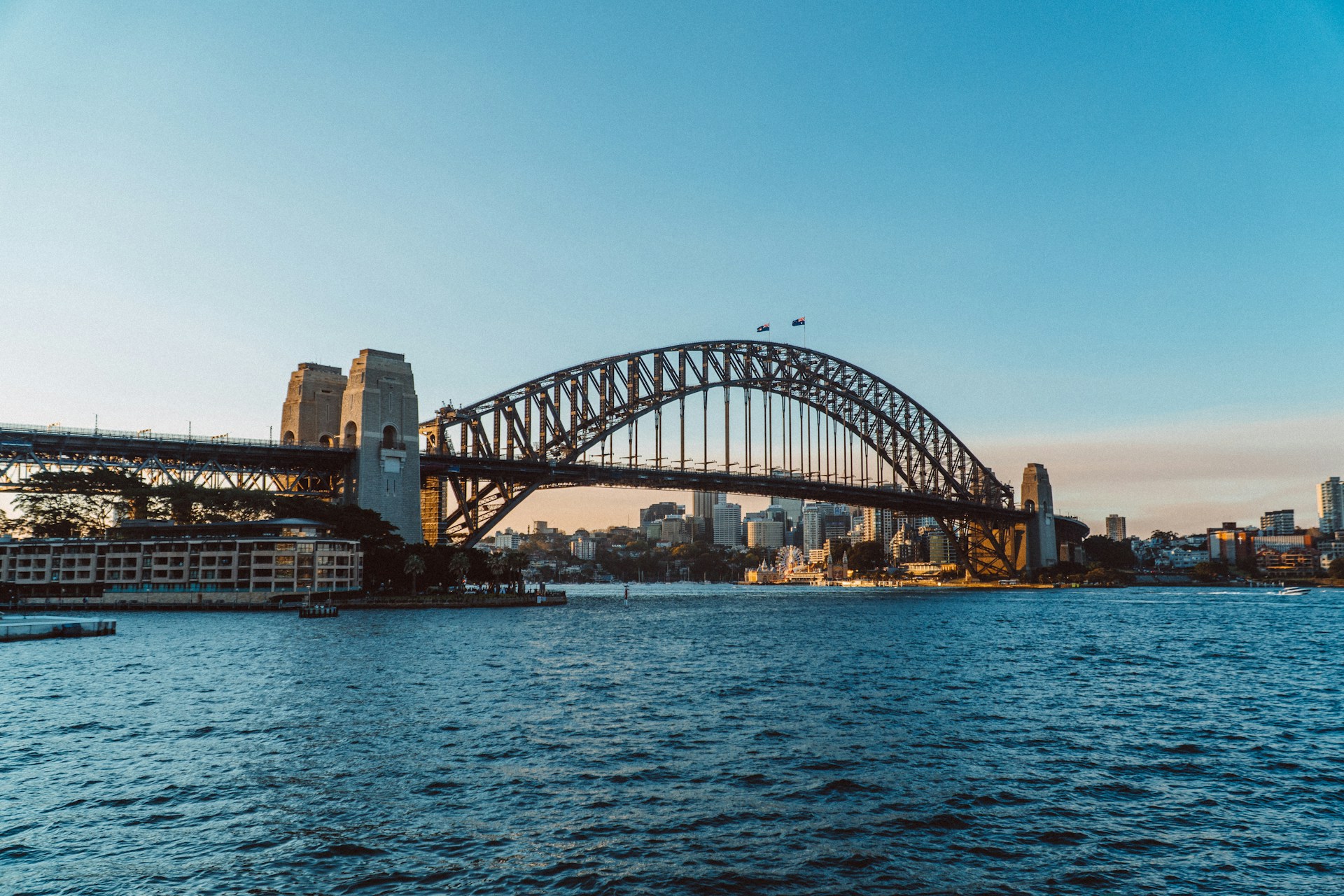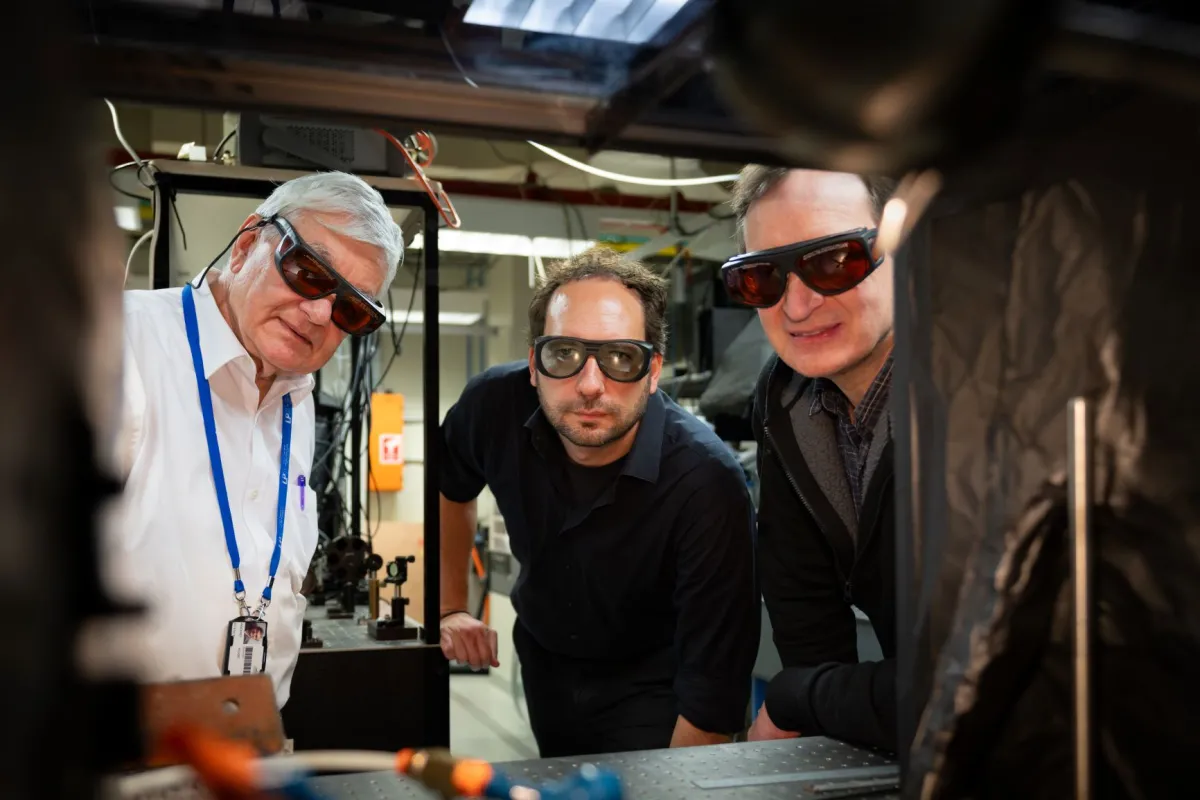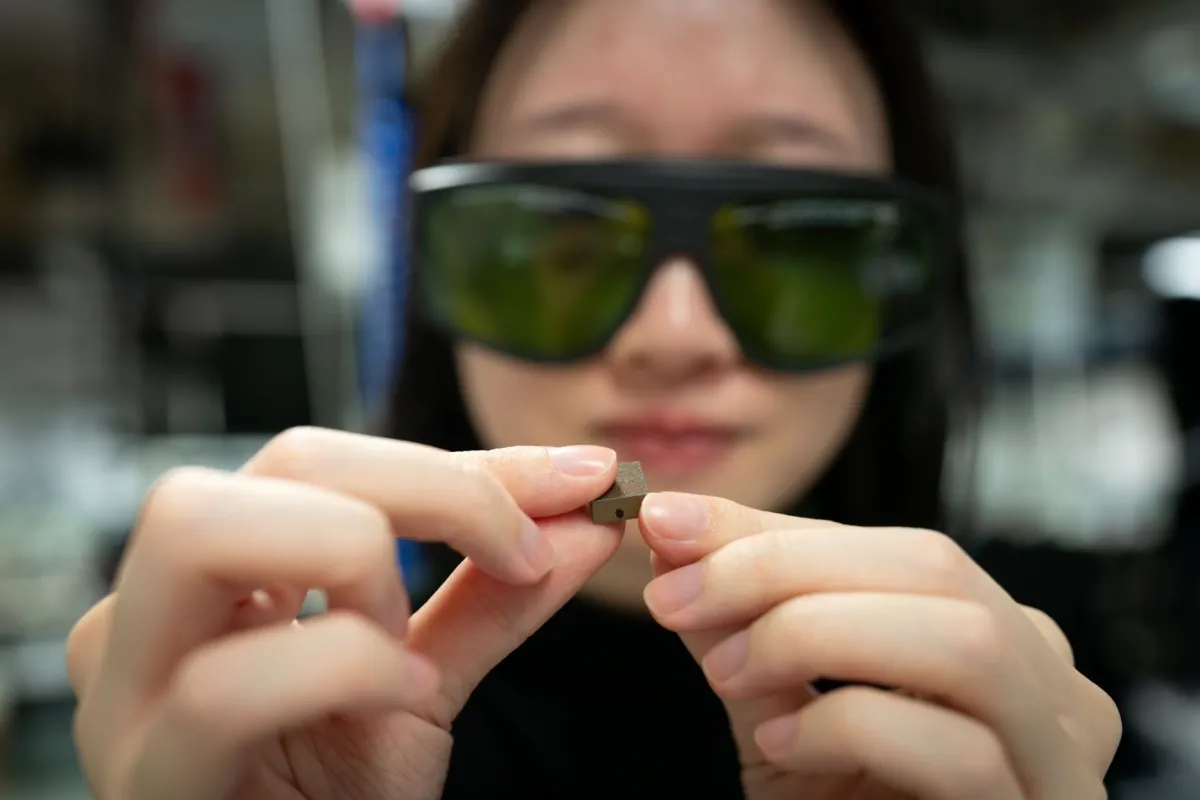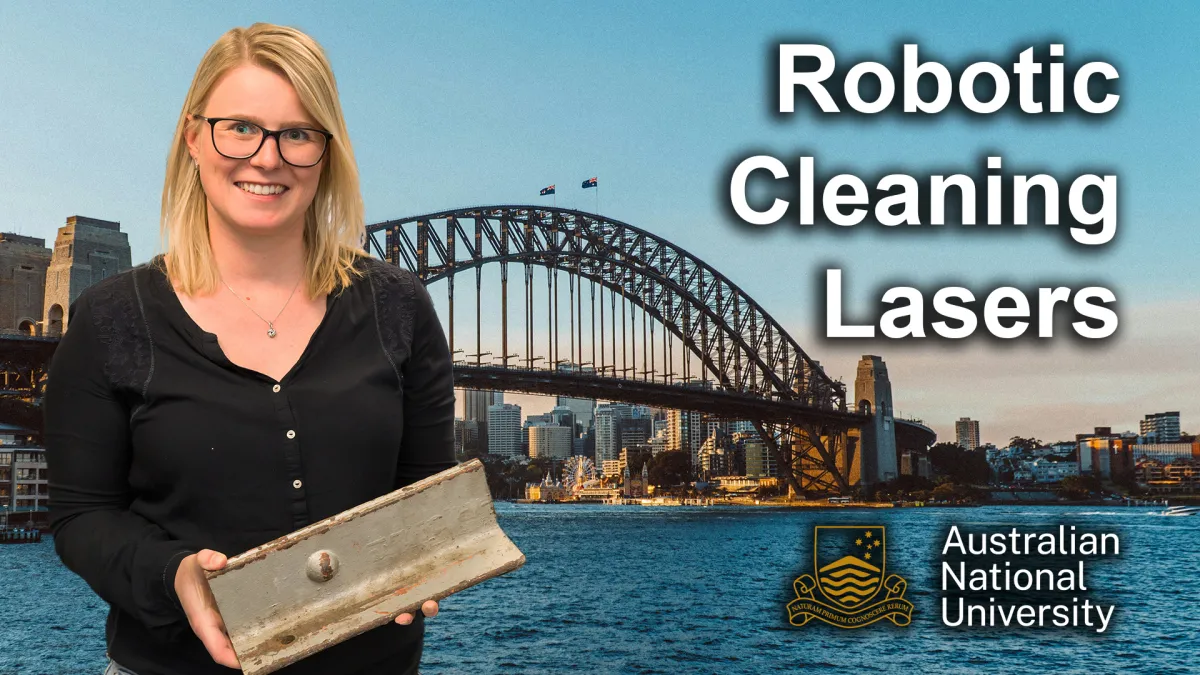
ANU physicists are using lasers to give the Sydney Harbour Bridge a makeover
By Rebeka Selmeczki
If you’ve ever walked into a shop selling Australian merchandise, you will have noticed one of the nation’s most iconic symbols, the Sydney Harbour Bridge, stamped across clothing and shot glasses.
The 92-year-old metal arch, which in its early days was called the ‘Iron Lung’ as it was seen to accelerate the city’s economic prosperity, bears the weight of more than 480 trains and 160,000 road vehicles every day.
But carrying all that on its back has meant the icon is at significant risk of degradation. Keeping ‘the coat hanger’ looking fresh and maintaining every section of its intricate structure is a colossal undertaking.
But now, thanks to physicists from The Australian National University (ANU), the heritage-listed bridge will remain a standout feature of the Sydney skyline for many generations to come.

Professor Andrei Rode and Professor Stephen Madden from the ANU Research School of Physics are committed to preserving the beauty, character and integrity of the bridge. The physicists are part of a group that has been tasked with developing a new cleaning method using powerful, ultrafast lasers.
The project is a collaborative venture between ANU, the University of Sydney, the University of Canberra, the Australian Nuclear Science and Technology Organisation and Transport New South Wales.
“When you go up there, you stop looking at the view, and you really start to appreciate the engineering in the bridge and the historical connection to the engineers of the past,” Madden says.
“We’re the caretakers in adopting lasers for maintenance.”
Squaring a circle
Current conservation work for the bridge involves sandblasting dirt, corrosion and erosion products, and the existing degraded paint and applying new paint to protect the bridge’s structure.
One of the puzzles facing the physicists was finding a way to clean more than seven kilometres of tightly confined tunnels, which are inaccessible to humans and where sandblasting is simply not possible.
“A mammoth effort is required to look after the bridge, a large part of which is cleaning the paint and stone and replacing aging and damaged paint,” Rode says.
“The arch interior has not been maintained since the bridge was built over 90 years ago and we need a tool that effectively maintains in the arch interiors.”
The team have developed a novel laser-based approach using cutting-edge techniques to deal with large swathes of degraded paint, corroded metal and dirt-encrusted stone.
“Powerful ultrashort pulse lasers can be used for cleaning which generate minimal dust and waste,” Rode says.

Rising to the challenge
The researchers developed a new process that uses powerful ultrashort pulse lasers to rapidly remove thick paint layers with no detectable damage to metal and stone surfaces.
While paint stripping with continuous wave and nanosecond pulsed lasers has been around for many years, these systems deposit a great deal of heat into the cleaned surfaces, raising the temperature so high that they usually melt the steel surface.
Ultrashort laser pulses in the femtosecond range — a million times shorter than nanosecond pulses — are so short that it leaves no time for a heat wave to propagate into the material.
“[The laser pulse is] about the output of an entire power station applied in less than one-thousandth of a billionth of a second,” Madden says.
This is so fast that the energy “instantly evaporates” the surface layers leaving the underlying metal structure intact and cold.
Madden says that while researchers accomplished what they set out to do when it came to keeping a Sydney icon clean, additional benefits emerged during their project.
“Through this new process, we reduced energy consumption whilst being economically and time competitive with established industrial-scale cleaning technologies such as sandblasting,” he says.
“Our method also draws extensively on fundamental physics research carried out at ANU more than a decade ago.”
Video by Phil Dooley/ANU Research School of Physics
Water under the bridge
After spending five years developing laser cleaning technology to preserve the integrity of our bridge, Rode says their approach to conservation and restoration can also be applied to other sectors, including the aerospace, automotive and marine industries.
With more than 270,000 steel bridges across the United States, Europe and Japan needing continued maintenance, and a global abrasive blasting market worth $11 billion, large-scale laser cleaning technology could transform the future of global infrastructure maintenance.
“The new technique has applications that go far beyond industrial processes,” Rode says.
“It has, for example, also proven to be a cost-effective method for cleaning contamination from and restoring the beauty of historic architectural and cultural treasures.”
This article was first published by ANU Reporter.




